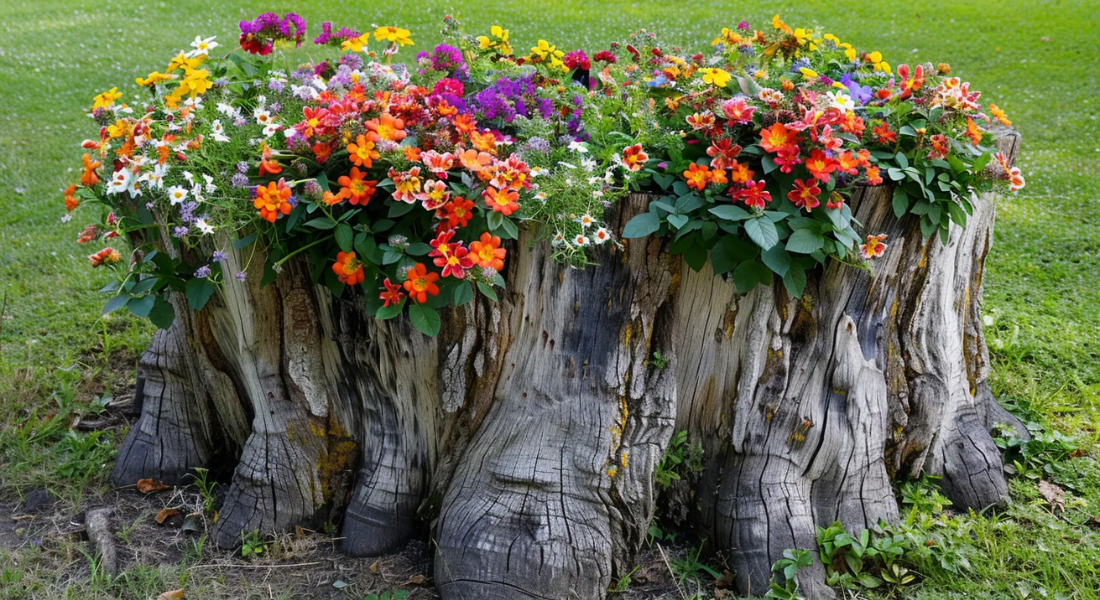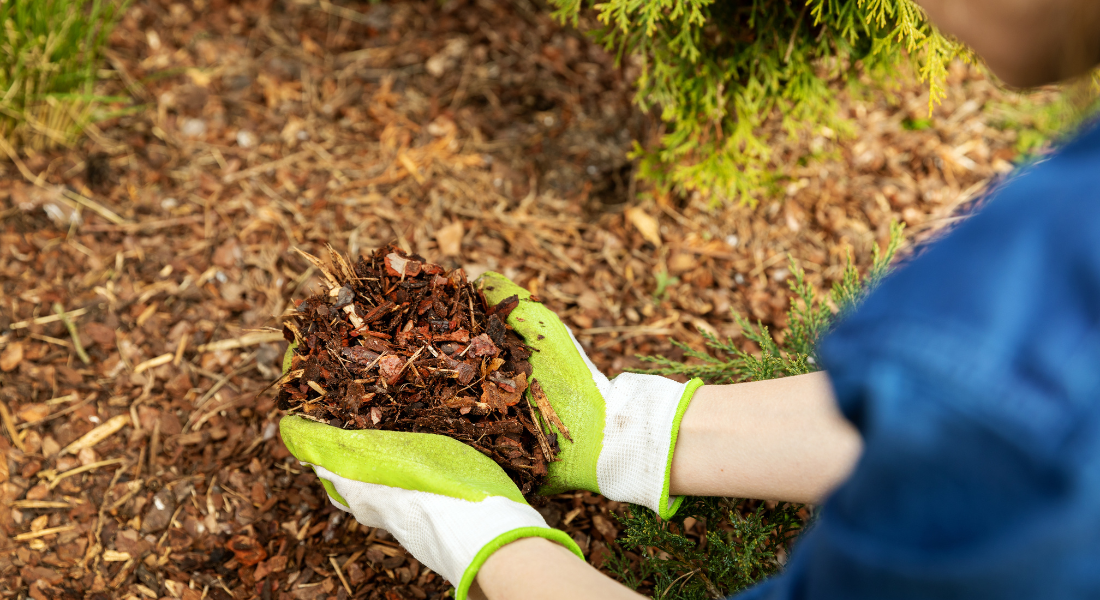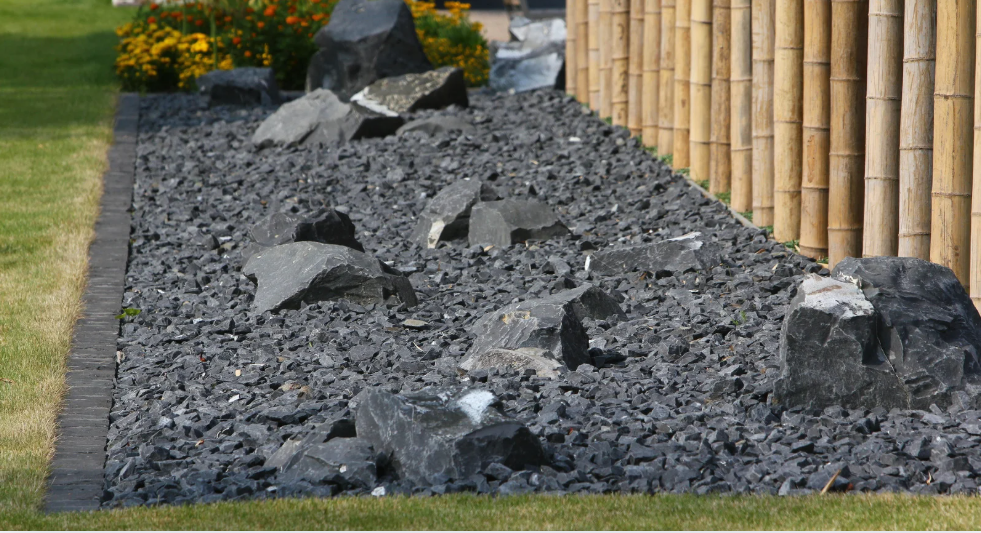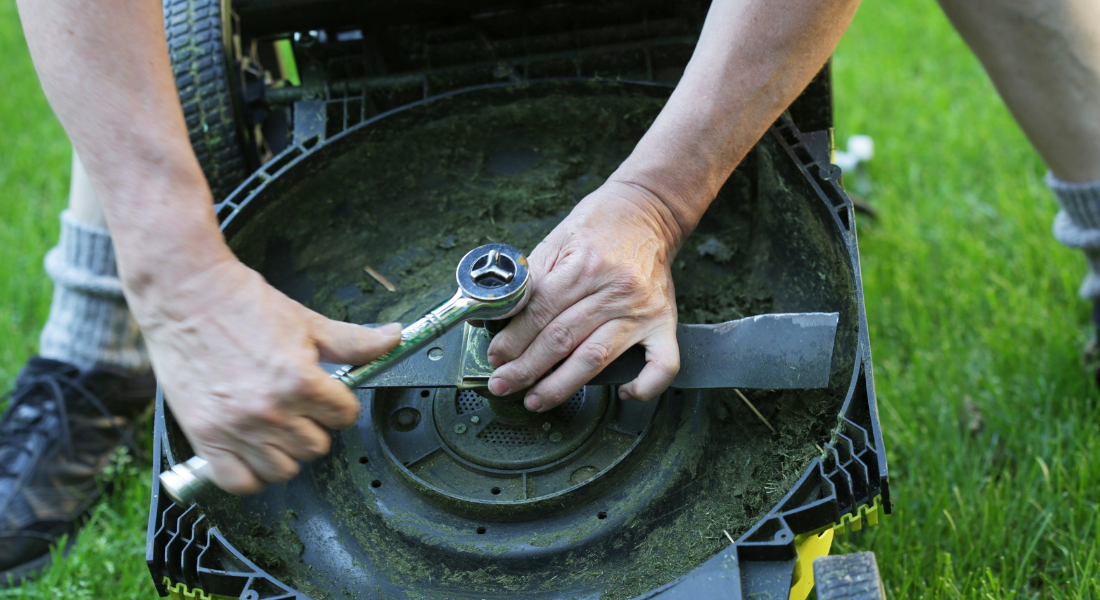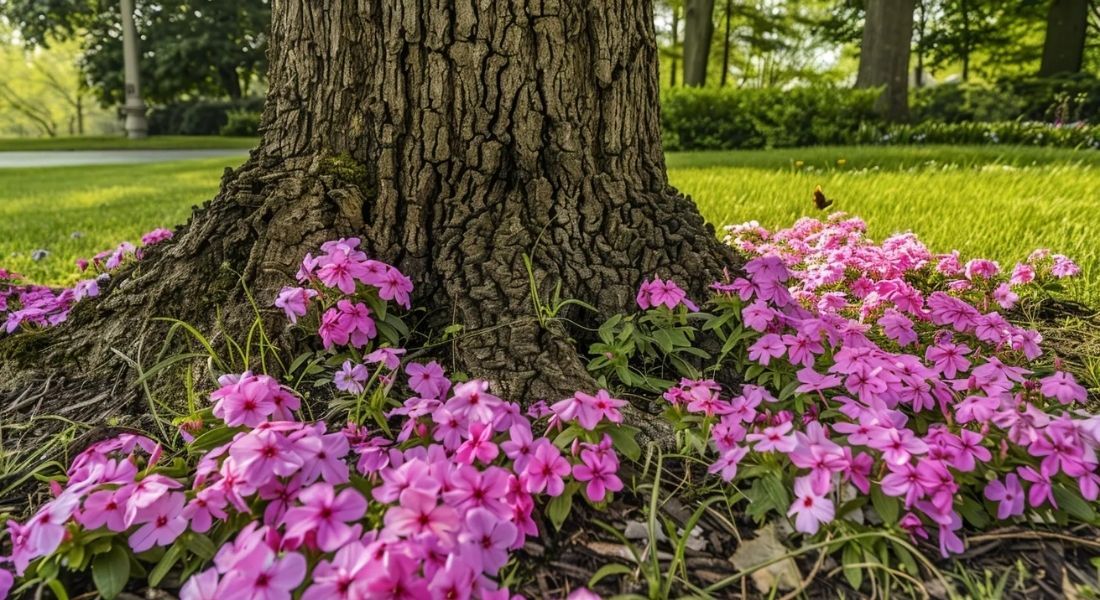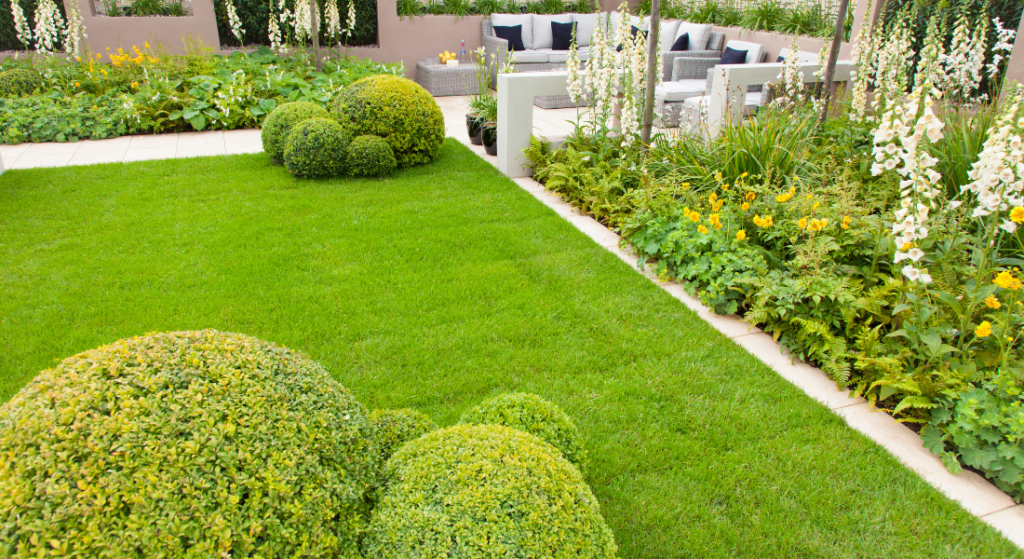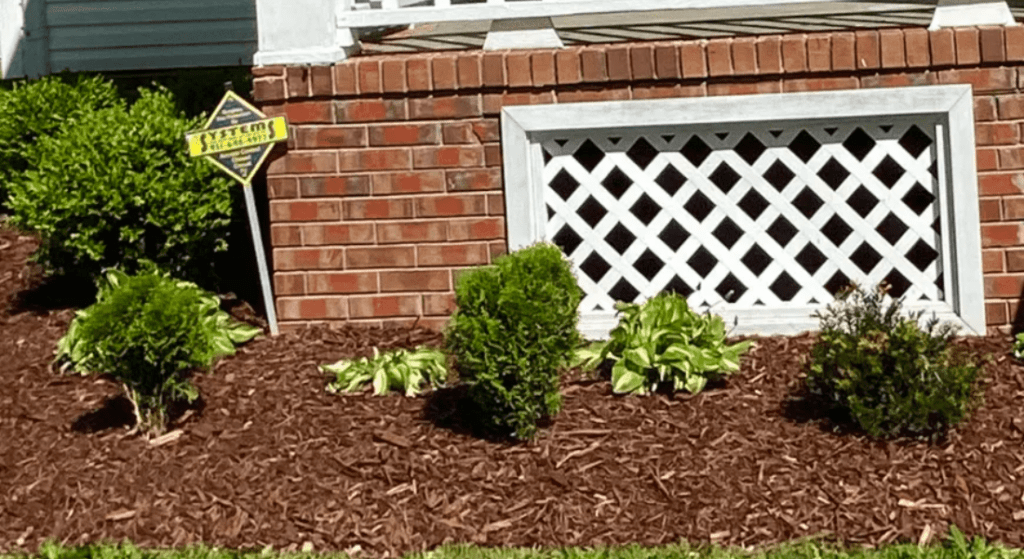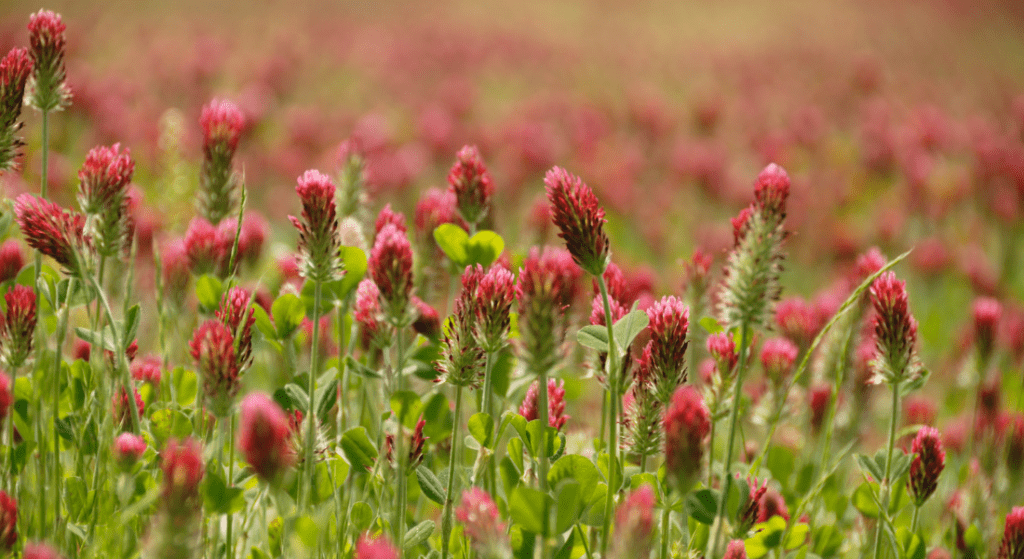What Plants Flower and Thrive Under the Shade of Trees?

Shaded areas under trees can seem like tough spots to fill—but they don’t have to be. With the right mix of shade-tolerant flowers, perennials, and ground covers, you can transform even the darkest corners into lush, colorful spaces. This guide walks you through exactly what to plant under trees based on your light conditions, soil, and desired aesthetic.
But, First: Gardening Under Trees. The Dos and Don’ts
Before you start planting, it's important to understand a few ground rules :D
Gardening around trees takes a little extra care, but with these tips, you'll set yourself up for success.
DO Start Small
Tree roots leave very little room for large planting holes, so look for small potted plants or divide mature plants into smaller sections before planting.
DO Plant Carefully
Trees like cherry, dogwood, magnolia, and maple have shallow roots that can be easily disturbed. If a spot is too root-heavy, just move over a bit and try again.
DON’T Add New Soil or Thick Mulch
Many trees have shallow feeder roots right beneath the surface. Adding too much soil or mulch can suffocate these roots by cutting off their oxygen supply.
DON’T Damage the Bark
Avoid injuring the bark during planting. Wounds to the tree trunk or exposed roots can allow pests and diseases to enter.
Understanding Shade Under Trees
Before choosing plants, it's important to understand the type of shade your tree provides. Different light levels support different types of plants, so identifying this early helps avoid planting frustration.
- Light shade: filtered sunlight, often called dappled shade
- Partial shade: 3 to 6 hours of sun, usually morning or late afternoon
- Deep shade: little to no direct sunlight due to dense tree canopies
Also, consider tree root competition and how much moisture reaches the soil. Shallow-rooted trees like maples and beeches make it harder for plants to establish, while deeper-rooted trees like oaks leave more room near the surface.
Perennial Flowers That Thrive Under Tree Shade
These reliable perennials return year after year and bring color to your shaded areas.
Astilbe
Astilbes features feathery blooms in pink, red, and white and thrive in moist, shaded conditions. Their fern-like foliage adds texture even after blooming ends.
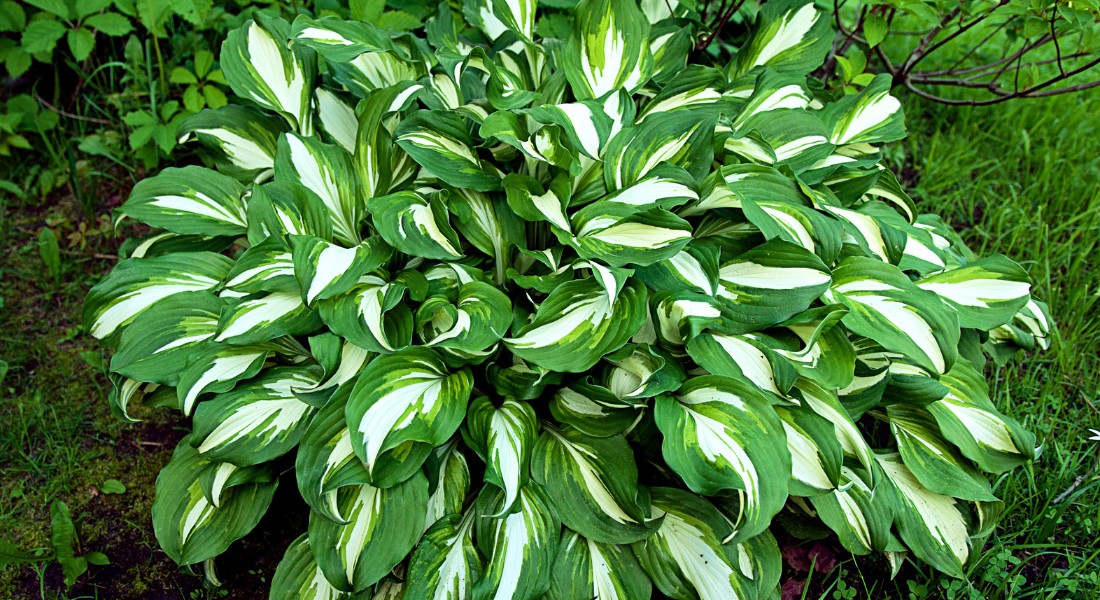
Hosta
Known for their broad, variegated leaves, Hosta do well in partial to full shade. While mainly grown for their foliage, many varieties produce delicate, bell-shaped flowers in summer.
Lungwort (Pulmonaria)
Lungwort is one of the first plants to bloom in spring, offering clusters of blue, pink, or violet flowers. Its speckled leaves provide ongoing interest.
Lily of the Valley
This ground-hugging plant produces small, fragrant white flowers in spring. It spreads easily and thrives in deep shade, making it ideal for under dense tree canopies.
Coral Bells (Heuchera)
Coral Bells offer both attractive foliage and delicate flower spikes. Their mounded shape makes them perfect for filling in gaps under trees, especially in dappled or partial shade.
Annual Flowers That Bloom in Shade
Annuals are a great way to add season-long color. These varieties perform well with less sun.
Impatiens
One of the most popular shade annuals, impatiens provide nonstop color in red, pink, white, purple, and coral. They do especially well in moist, partially shaded spots.
Begonias
Begonias come in many forms, from waxy-leafed bedding plants to dramatic tuberous types. All varieties thrive in light to moderate shade.
Torenia (Wishbone Flower)
This underused annual offers purple, pink, or blue flowers with yellow centers. It handles partial shade and adds brightness to shaded flower beds.
Ground Covers That Bloom Under Trees
For dense coverage and low maintenance, these ground covers bloom and spread under trees.
Lily of the Valley
In addition to flowering, Lily of the Valley spreads quickly to create a lush carpet under trees with limited sunlight.
Bergenia
With large leaves and early spring blooms in pink or white, Bergenia adds both color and bold structure to shady spaces.
Hens and Chicks (Sempervivum)
These hardy succulents can handle dry, partially shaded conditions near tree trunks. They spread by forming rosettes and work well in rockier areas.
Foliage Plants That Add Color Without Flowers
If blooms are limited, colorful foliage can still brighten shaded areas.
Coleus
Coleus is one of the easiest and most colorful foliage plants for shade. It comes in endless combinations of green, pink, red, and purple.
Hosta and Heuchera (Again)
These dual-purpose plants deliver both floral and foliage interest, with leaf textures and colors that range from lime green to burgundy.
Shrubs That Tolerate Shade
If you want structure or height under trees, choose shrubs that can handle low light.
Dogwood Shrub (Cornus sericea)
This deciduous shrub has red stems and clusters of small white flowers in spring. It does well in partial shade and adds winter interest too.
Oakleaf Hydrangea
Oakleaf Hydrangeas tolerate more shade than other varieties and bloom in large white or pink clusters. Their bold foliage turns red or bronze in fall.
Tips for Planting Under Trees Without Damaging Roots
Planting under trees requires special care to protect root systems and maintain tree health.
- Avoid deep digging that disturbs major roots
- Choose shallow-rooted plants like Hosta, Impatiens, or ground covers
- Use a thin layer of mulch to retain moisture but avoid piling it against the tree trunk
- Consider raised planting beds for trees with dense surface roots
- Water regularly, especially in the first season, as trees often absorb most of the moisture
Designing a Year-Round Shade Garden
To keep your shade garden visually appealing in every season, mix plants for spring blooms, summer color, and fall foliage.
A sample combination:
- Spring: Lungwort, Lily of the Valley, Bergenia
- Summer: Impatiens, Begonia, Astilbe
- Fall: Oakleaf Hydrangea foliage, Coral Bells, Coleus
- Evergreen interest: Hosta and ground covers like Bergenia
Layering plants by height and bloom time creates depth and ensures something is always happening in your garden, even in the shade.
Let GreenLife Services Help You Plant Under Trees
At GreenLife Services, we know how tricky it can be to grow flowers and plants under trees. That’s why we offer expert lawn and landscaping services right here in Clarksville, TN.
We’ll help you choose the best shade-loving plants, improve your soil, and create a beautiful garden that thrives in the shade.
Just
call us today! Our team is always ready for you and we can also come and visit the yard (100% free!).
Summary: Best Plants for Flowering and Thriving Under Tree Shade
Understand your tree’s shade level: light, partial, or deep
Choose perennials like astilbe, Hosta, Lungwort, Coral Bells, and Lily of the Valley
Add annuals for seasonal color: Impatiens, Begonias, and Torenia
Ground covers like Bergenia and Hens and Chicks fill in bare spots and bloom
Use foliage plants like coleus and heuchera to add texture and color
Include shade-tolerant shrubs like oakleaf hydrangea and dogwood shrub for height
Avoid root damage, mulch lightly, and water regularly to help new plants establish
With the right plant selection, even the shadiest area under your trees can become one of the most beautiful parts of your landscape.
FAQs
Q. What flowers grow best under trees?
A. Some of the best flowers for growing under trees include Astilbe, Hosta, Lungwort, Lily of the Valley, Coral Bells, Impatiens, And Begonias. These plants thrive in partial to deep shade and can handle the competition for moisture and nutrients from nearby tree roots.
Q. What are the best flowering plants for shade?
A. Top-performing flowering plants for shade include Astilbe, Impatiens, Begonias, Torenia, Lungwort, and Coral Bells. These flowers either bloom in low light or tolerate filtered sunlight and still produce vibrant color.
Q. What flowering trees grow best in shade?
A. While most flowering trees need sun, a few tolerate partial shade. The flowering dogwood (Cornus florida), redbud (Cercis canadensis), and Carolina silverbell (Halesia carolina) can flower with limited light, especially if they receive some morning sun or dappled light throughout the day.
Q. What is the best thing to put around the base of a tree?
A. The best options are shade-tolerant ground covers like Lily of the Valley, Bergenia, or Hosta. You can also use mulch, but keep it away from the trunk to prevent rot. Avoid aggressive plants or deep digging that could damage the tree's roots.
Q. What is the longest blooming flower in the shade?
A. Impatiens and begonias are some of the longest-blooming shade flowers, often flowering from spring until frost with minimal maintenance. Astilbe and coral bells also offer extended bloom times and attractive foliage when not in flower.
Q. Which plant grows best in shade?
A. It depends on the type of shade, but Hosta are among the best overall performers. They're hardy, come in many varieties, and tolerate deep shade. For flowers, impatiens and Astilbe are reliable favorites in partial to full shade conditions.

